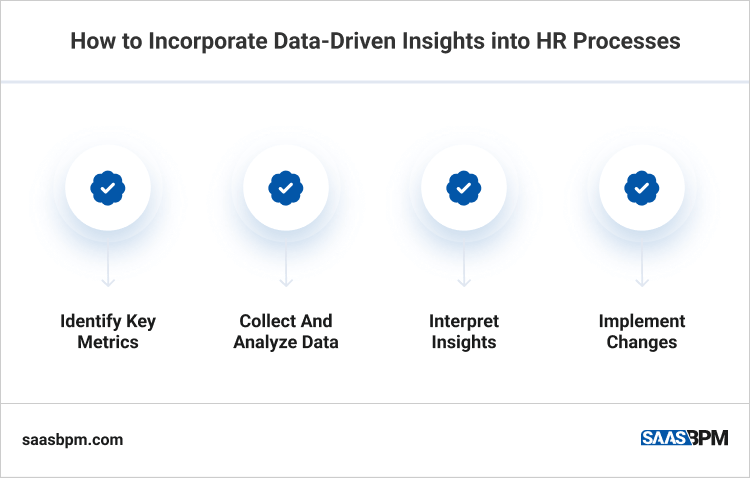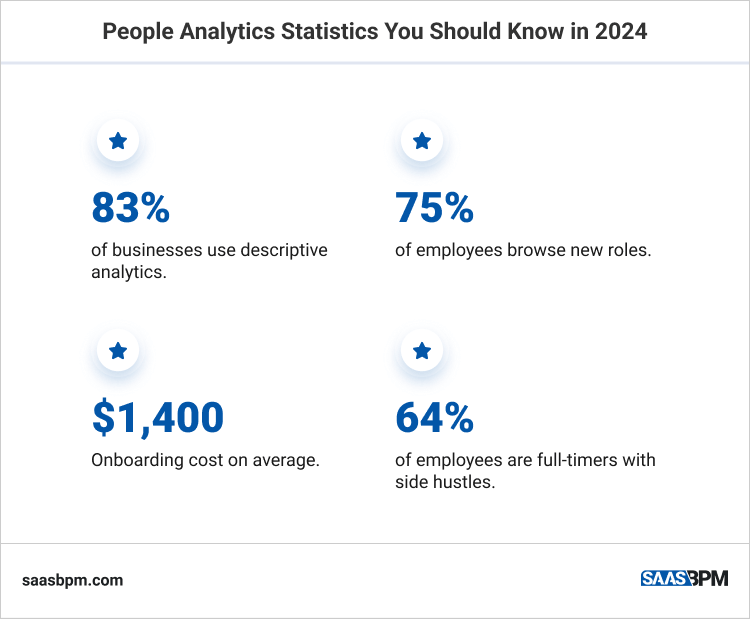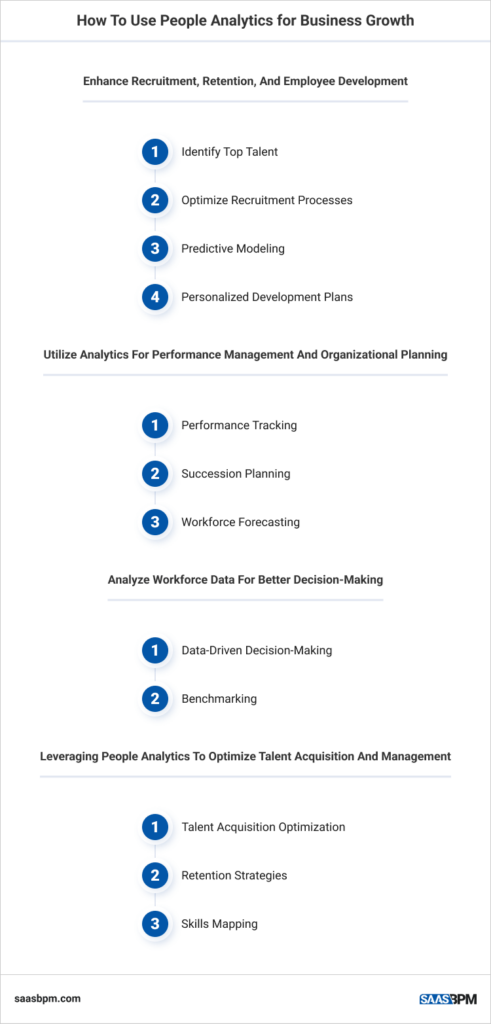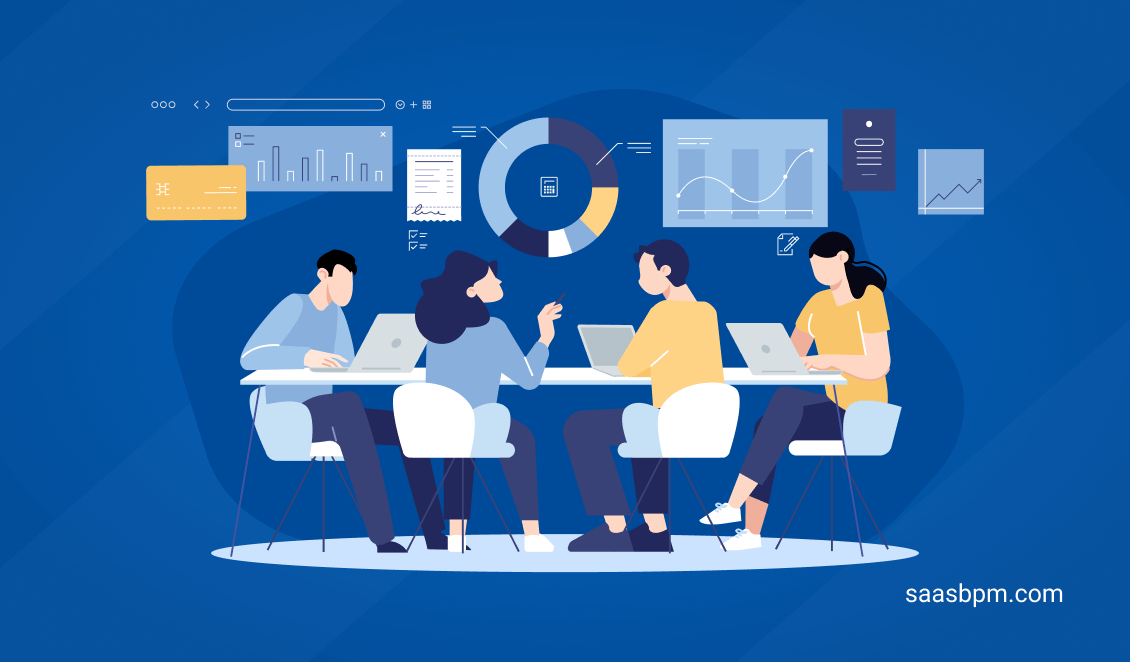Even though people analytics goes back as early as the 1910s, organizations are now increasingly using it to unlock the potential of their workforce and drive strategic decision-making. People analytics, also known as HR analytics or workforce analytics, involves leveraging data and analytical tools to gain insights into various aspects of the workforce, from recruitment and retention to performance management and organizational planning.
People analytics can help you achieve sustainable business growth and success. By harnessing the power of data-driven insights, organizations can make informed decisions that drive efficiency, productivity, and employee satisfaction.
To better optimise recruitment processes, identify top talent and improve employee engagement, people analytics offers a strategic advantage in today’s competitive business landscape.
What Is People Analytics?

People analytics, also referred to as HR analytics or workforce analytics, is a powerful approach that combines data and analytical tools to gain valuable insights into various aspects of an organization’s workforce.
This process enables businesses to understand workforce dynamics and make informed decisions that drive success in areas such as recruitment, retention, performance management, and talent development.
To put it simply, people analytics enables companies to optimize employee productivity by identifying tasks suitable for automation. This way employees can focus on more valuable activities.
Moreover, it helps in addressing high turnover rates based on factors affecting employee engagement, fostering suitable conditions to retain the current workforce. Additionally, HR analytics aids in efficient hiring by analyzing historical data to understand the requirements for new hires, ensuring they are a good fit for the company.
Key Functions of People Analytics
People analytics provides essential information on workplace dynamics via three channels:
Data Collection and Analysis
The initial stage involves collecting relevant data from multiple sources, such as HR information systems, employee surveys, and performance evaluations. This data is then analyzed using statistical and analytical techniques to identify patterns, trends, and correlations.
Integration of Data-Driven Insights
People analytics seeks to incorporate data-driven insights into HR processes and decision-making. By integrating data into recruitment, training, and performance management, organizations can make informed choices that align with business objectives and foster growth.
Informed Decisions
Empowering HR professionals and organizational leaders to make informed decisions is a primary goal of people analytics. Analyzing workforce data enables HR teams to identify improvement areas, anticipate future trends, and proactively develop strategies to overcome challenges.
How to Incorporate Data-Driven Insights into HR Processes

To effectively integrate data-driven insights in HR, organizations should follow these steps:
1. Identify Key Metrics
Determine the key performance indicators (KPIs) and metrics relevant to your organization’s goals and objectives. These metrics may include employee turnover rates, time-to-fill for open positions, employee engagement scores, training and development effectiveness, and diversity and inclusion metrics. By aligning key metrics with strategic objectives, organizations can focus their people analytics efforts on areas that directly impact business performance.
2. Collect and Analyze Data
Gather relevant data from various sources such as HR information systems, employee surveys, performance evaluations, and other internal databases. Employ analytical tools and techniques to analyze this data, identifying patterns, trends, and insights.
3. Interpret Insights
Gather relevant data from various sources such as HR information systems, employee surveys, performance evaluations, and other internal databases.
4. Implement Changes
Leverage data-driven insights to drive improvements in HR processes. This may include making changes to recruitment strategies to attract and retain top talent, optimizing training programs based on performance data, and refining performance management processes to align with organizational goals. By implementing changes informed by data-driven insights, organizations can enhance efficiency, productivity, and overall workforce performance.
People Analytics Statistics You Should Know in 2024

In 2024, several key statistics in people analytics shed light on workforce trends and challenges, offering valuable insights for businesses:
- 83% of businesses use descriptive analytics. Descriptive analytics involves analyzing historical data to understand past trends and patterns. For businesses, this statistic indicates a widespread adoption of basic analytics techniques. By leveraging descriptive analytics, organizations can gain insights into workforce dynamics, identify areas for improvement, and make data-driven decisions to drive business performance.
- 75% of employees browse new roles. The high percentage of employees browsing new roles highlights the prevalence of job dissatisfaction and turnover in the workforce. For businesses, this statistic underscores the importance of employee engagement and retention strategies. Companies need to focus on creating a positive work environment, providing opportunities for growth and development, and addressing employee concerns to reduce turnover and retain top talent.
- Onboarding costs $1,400 on average. Onboarding costs represent a significant investment for businesses. This statistic emphasizes the importance of effective onboarding processes to ensure a smooth transition for new hires. By investing in comprehensive onboarding programs, companies can accelerate the integration of new employees, enhance productivity, and improve employee satisfaction, ultimately reducing turnover and maximizing ROI.
- 64% of employees are full-timers with side hustles. The rise of employees with side hustles highlights the changing nature of work and the gig economy. For businesses, this statistic presents both opportunities and challenges. On one hand, employees with side hustles may bring additional skills and experiences to their roles. On the other hand, managing side gigs alongside full-time work can lead to burnout and decreased productivity. Companies need to find a balance between supporting employees’ entrepreneurial endeavors and ensuring they remain engaged and focused on their primary roles.
How To Use People Analytics for Business Growth

Implementing people analytics in organizations is crucial for driving business growth and optimizing workforce management. By leveraging data-driven insights, businesses can enhance various aspects of HR processes to improve recruitment, retention, employee development, performance management, organizational planning, talent acquisition, and management. Here are some strategies to effectively use people analytics for business growth:
1. Enhance Recruitment, Retention, and Employee Development
Identify Top Talent. Use people analytics to identify key indicators of top performers within the organization. Analyze factors such as performance metrics, engagement levels, and leadership potential to identify employees with the highest potential for success.
Optimize Recruitment Processes.Analyze recruitment data to identify bottlenecks and inefficiencies in the hiring process. Use insights from people analytics to streamline recruitment workflows, improve candidate sourcing strategies, and enhance candidate experience to attract top talent.
Predictive Modeling.Utilize predictive analytics to forecast future workforce needs and identify potential talent gaps. By analyzing historical data on employee turnover, retirement rates, and workforce demographics, businesses can anticipate future staffing requirements and proactively address talent shortages.
Personalized Development Plans.Leverage people analytics to create personalized development plans for employees based on their skills, interests, and career aspirations. Use data on training and development activities, performance evaluations, and career progression to identify opportunities for skill enhancement and career advancement.
2. Utilize Analytics for Performance Management and Organizational Planning
Performance Tracking.Use people analytics to track and evaluate employee performance metrics such as productivity, efficiency, and quality of work. Identify high-performing employees and areas for improvement to optimize workforce performance.
Succession Planning.Analyze workforce data to identify potential successors for key roles within the organization. Use insights from people analytics to develop succession plans and ensure continuity of leadership in critical positions.
Workforce Forecasting.Utilize predictive analytics to forecast future workforce trends and develop strategic workforce plans. By analyzing data on workforce demographics, skills inventory, and turnover rates, businesses can anticipate future staffing needs and align their workforce strategy with business objectives.
3. Analyze Workforce Data for Better Decision-Making
Data-Driven Decision-Making. Foster a culture of data-driven decision-making within the organization. Provide training and resources to HR professionals and organizational leaders on how to interpret and apply insights from people analytics to inform strategic decisions.
Benchmarking. Compare workforce metrics and performance indicators against industry benchmarks and best practices. Use benchmarking data to identify areas of strength and areas for improvement and benchmark performance against industry peers to drive continuous improvement.
4. Leveraging People Analytics to Optimize Talent Acquisition and Management
Talent Acquisition Optimization.Use people analytics to optimize talent acquisition strategies and improve the quality of hires. Analyze data on recruitment sources, candidate demographics, and hiring outcomes to identify the most effective recruitment channels and techniques.
Retention Strategies.Utilize people analytics to identify factors contributing to employee turnover and develop targeted retention strategies. Analyze data on employee engagement, satisfaction, and turnover rates to identify trends and implement initiatives to improve retention.
Skills Mapping.Use people analytics to map employee skills and competencies against current and future business needs. Identify skills gaps and areas for development to ensure the organization has the necessary talent to support strategic objectives.
Final Words
In summary, people analytics offers invaluable insights into workforce dynamics, enabling businesses to optimize HR processes and drive business growth. By leveraging data-driven insights, organizations can enhance recruitment, retention, employee development, performance management, and talent acquisition. It’s essential to recognize the significance of people analytics in today’s competitive landscape and explore its potential for driving organizational success.

